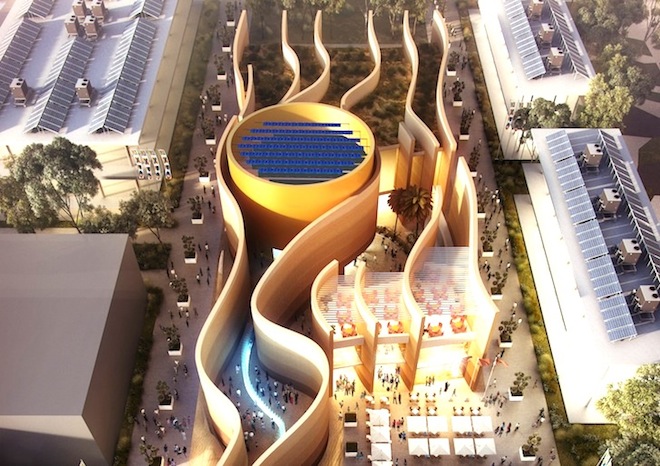 Remember how exciting it was when we first saw pictures of Masdar City in the United Arab Emirates. Masdar is the futuristic terra-cotta curvy buildings designed by Foster & Partners? Well, the same design team is behind the United Arab Emirate’s solar-powered 2015 Milan Expo Pavilion and it features a host of groundbreaking technology.
Remember how exciting it was when we first saw pictures of Masdar City in the United Arab Emirates. Masdar is the futuristic terra-cotta curvy buildings designed by Foster & Partners? Well, the same design team is behind the United Arab Emirate’s solar-powered 2015 Milan Expo Pavilion and it features a host of groundbreaking technology.
“We are very proud to be chosen again to create the national pavilion for the UAE,” stated Norman Foster. “Our challenge has been to design for two climates – to create a naturally cool, comfortable space for visitors in Milan, while considering the pavilion’s ultimate reconstruction in the Emirates, where there is a need to provide shade from the intense sun.”
Visitors to the 54,000 square foot pavilion will enter through what appears like a narrow slot canyon with 40 foot walls on either side of them. Similar in color to the buildings at Masdar, these walls mimic the appearance of the region’s numerous sand dunes in structure and texture.
In addition to their aesthetic value, the walls help to ensure a pleasant microclimate within the pavilion, which is one of 140 that will showcase a variety of techniques designed to support Milan’s 2015 Expo theme “Feeding the Planet, Energy for Life.”
Built into the walls is a material that absorbs carbon dioxide, an exciting new technique that could help to mitigate, in small measures, some of the greenhouse gases released into our atmosphere that are responsible for global warming and subsequent climate change.
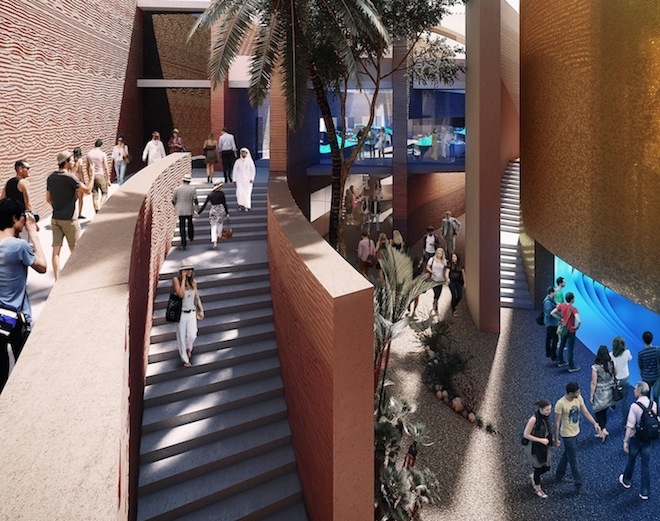
A system of iPads with blue water-like screens will be arranged to look like an aqueduct, which once provided valuable life in the desert.
Equipped with an iPad that allows them to learn more about what they encounter throughout the pavilion, visitors will funnel upwards through the meandering canyon space to a ground level cafe, state of the art auditorium where workshops and demonstrations will be held, and a rooftop garden featuring drought-resistant plants native to the Gulf region.
Among the most pertinent technologies to be integrated into this pavilion, which is specifically designed to evoke the ambience and desert conditions surrounding Abu Dhabi, is a storm water runoff system and integrated photovoltaic panels.
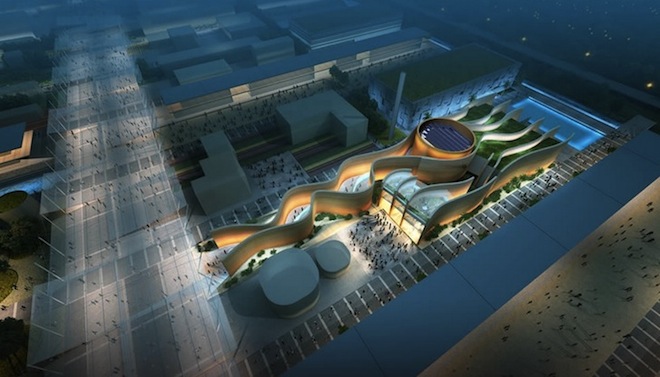
Foster + Partners hopes to achieve a LEED-Platinum certification for their pavilion, which will be dismantled and re-erected in Abu Dhabi once the expo is complete.
:: Arch Daily

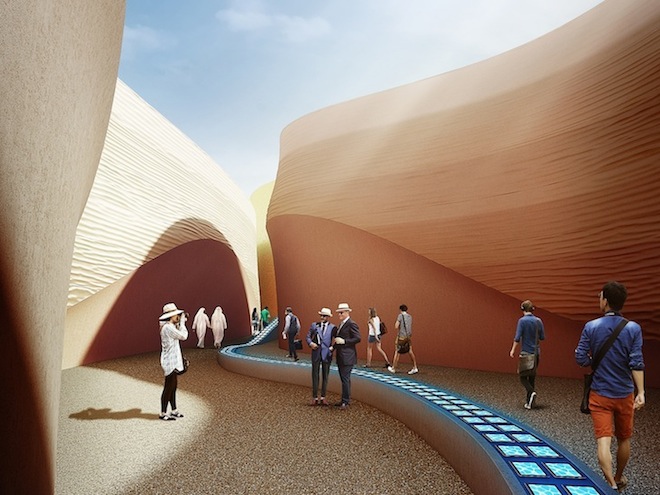
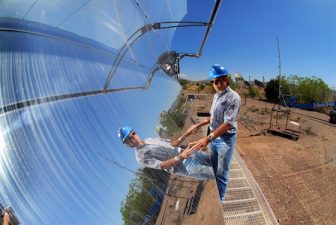

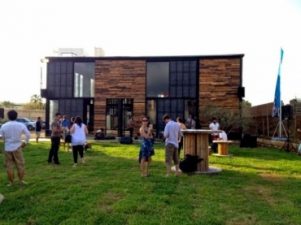
One thought on “This wavy Expo pavilion will eat greenhouse gas in 2015”
Comments are closed.